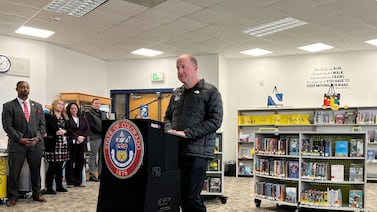A Louisiana policy requiring high school students to fill out a federal financial aid application helped close the gap in completion rates between low- and high-income school districts within just two years. But it revealed information gaps and other hurdles for students to unlock college aid.
That’s according to research released on Thursday by the Century Foundation, which dissected the impacts of Louisiana’s pioneering policy requiring the Free Application for Federal Student Aid as a graduation requirement.
With 13 states across the country considering a similar requirement, the research provides a yardstick for whether the requirement is effective in helping low-income students gain access to federal aid for college. And while Colorado lawmakers aren’t considering such a move, the research lays out considerations for states seeking to boost FAFSA completion rates.
“This is about creating a system of support, which can connect the dots between students and the components of college access,” Peter Granville, the foundation’s senior policy director and author of the study, said. “I hope it’s not seen as a quick and easy solution, but instead part of a comprehensive approach to increasing student knowledge about how to access college and the resources to afford it.”
More than $2 billion in Pell Grants — the need-based federal aid program for postsecondary education — goes unclaimed each year by students who do not complete the free application, according to the study. Colorado ranks 47th in the nation for the percentage of high school students who complete the form.
Although the Louisiana policy is labeled as mandatory, students can opt out of it. While the policy doesn’t get every student to fill out the form, Granville said, it does create conversations about college options.
In the first year after the policy was implemented, 4 out of 5 high schools had 65% or more of their seniors completing the FAFSA, compared with 1 in 3 schools the year before, the researchers found.
But they found that about a third of submitted FAFSA forms were never evaluated for federal financial aid eligibility because of missing information, incomplete signatures, or challenges with information verification.
The report said the number of applications with incomplete information was higher in districts with more low-income students and students of color. Students in the country illegally and English-learning students also had difficulty with the requirement, because they lacked a Social Security number or struggled to interpret the form.
Granville said he recommends that states fund resources to help students navigate the form, including more money for counselors.
“The No. 1 thing I would say that families need for FAFSA completion is one-on-one help with the form from a trained counselor or other professional,” Granville said.






